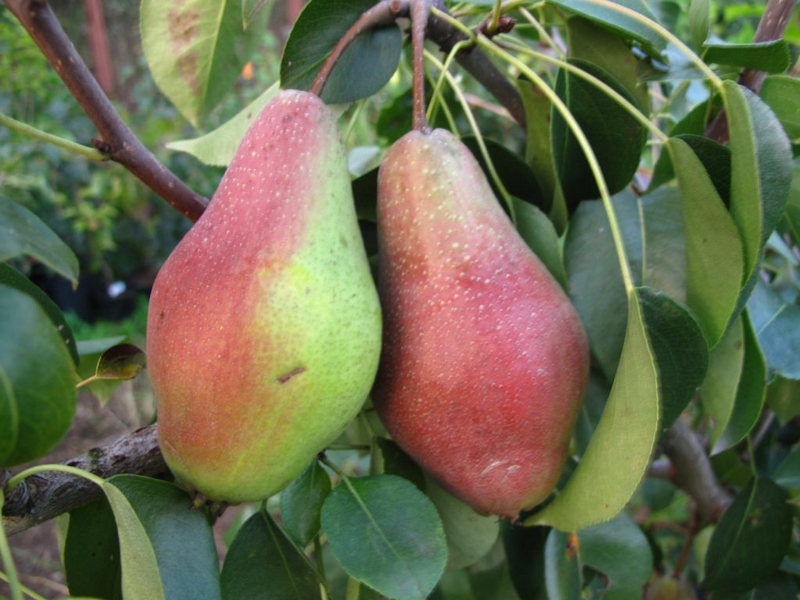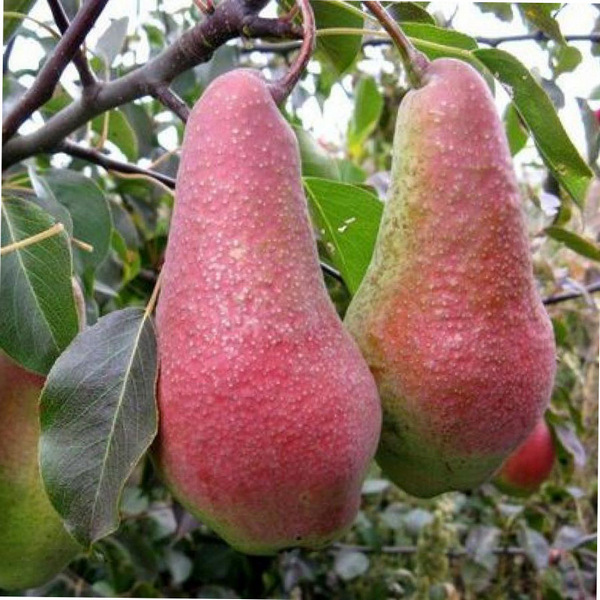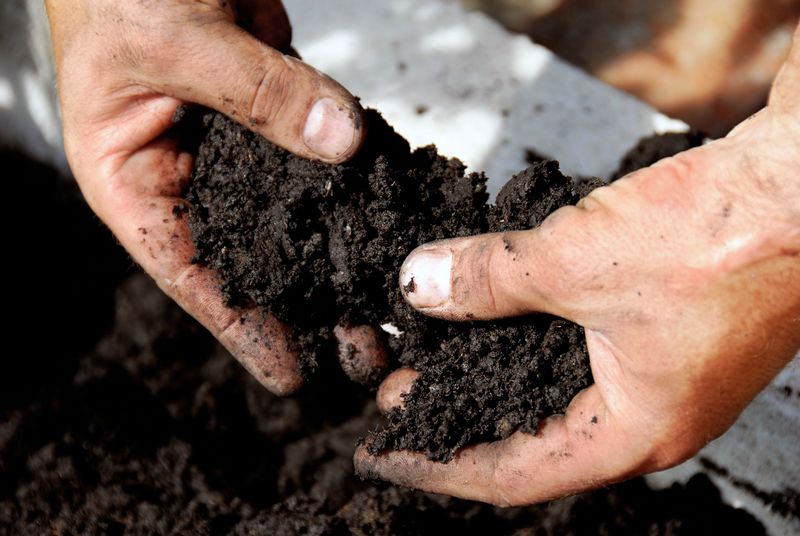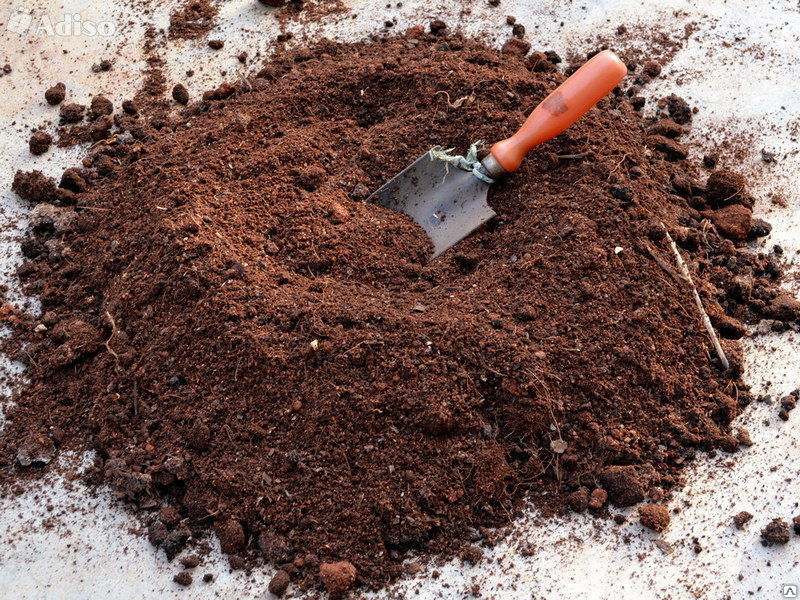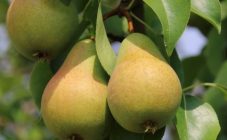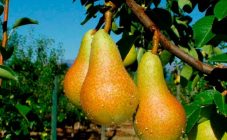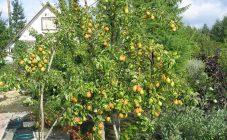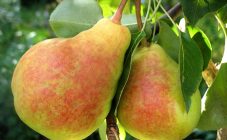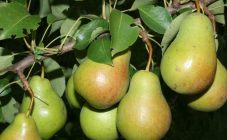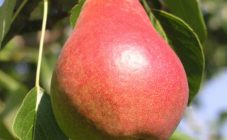Content:
Pear is an ancient pome fruit crop from the Rose family. Many ancient Greek scholars mention it in their writings. Even then, the pear was used for food and medicinal purposes.
The pear has many similarities to the apple tree. The main difference is that it is a more drought-resistant crop, but inferior to an apple tree in winter hardiness. The timing of flowering also varies - the pear blooms earlier. In appearance, the plants are similar to each other.
Under good growing conditions, good quality fruit can be obtained. This differs the pear from other horticultural crops. Hard and sour fruits are obtained on marginal soils during unfavorable summer. As for the shape of the fruit, in the pear they are elongated, with an expansion in the lower part.
The pear is also used as an ornamental plant. There are specially bred varieties for decorating personal plots. The main purpose of the culture is fruit. The collected fruits are used both fresh and processed (compotes, preserves, jam, etc.). In Switzerland, pears even make delicious honey. The culture is very common in China - the country is considered the largest pear producer.
This article will consider the Yakovlevskaya pear, its description, features and growing technology.
The history of the creation of the variety
The pear of the Yakovlevskaya variety is the result of selection by the State Scientific Institution of the All-Russian Research Institute of Genetics and Breeding of Fruit Plants. I.V. Michurin. The parental forms were the Talgar beauty and Daughter of the Dawn varieties. In 2002, the obtained variety was included in the State Register. The authors were a group of scientists led by S.P. Yakovlev. After a series of tests, the variety began to be grown in the Central Black Earth Region.
Characteristics and features of the variety
Morphological signs
Trees of medium height have a not too thick pyramidal crown. Some are capable of reaching a height of 10 m. On average, trees grow 25 cm in height and 15 cm in width per year. Shoots are non-pubescent, of medium thickness, most often straight, dark red. You can see a lot of lentils. The leaves are small, shaped like an egg. They have small notches along the edges. The tips of the leaves are pointed. The leaf blade is green and curved upward. The surface of the sheet is smooth and has a characteristic shimmer. Petioles are medium in thickness and length. The stipules are in the shape of an awl.
Fruiting is expressed in all fruit formations. It is also called mixed fruiting. The approximate weight of the fruit is 130-200 g. The shape of the fruit is narrow-rhombic or elongated pear-shaped. The skin is smooth, slightly oily, with a waxy coating. At the time of the onset of removable ripeness, the skin acquires a greenish color, and at consumer maturity - yellow-green. The cover color is represented by a red blush. The peduncle is curved and of medium length and thickness. The funnel is shallow and narrow in shape, and the saucer is of medium depth and wide. Seed chambers of a closed type. The seeds in them are brown in color and conical in shape. The seeds are medium in size.
The pulp is creamy and slightly granular. Although the pulp is dense, it tastes juicy and tender. Speaking of tastes, they are excellent. The pulp of the fruit has a sweet and sour taste and a pleasant aroma.
Fruit is consumed fresh and processed (prepared). Also, the fruits are used to prevent colds and a number of other diseases, such as bronchitis.
Biological features
Fruiting occurs in the fifth or sixth year after planting. The very high frost resistance of the variety allows it to calmly survive frosty winters. That is why trees do not need additional shelter. Pear Yakovlevskaya belongs to high-yielding varieties. The shelf life of fruits is up to six months in cold rooms.
The variety is resistant to many diseases and pests. Not affected by entomosporia.
Agrotechnics
Pear Yakovlevskaya is unpretentious in cultivation.
Seat selection
When choosing a landing site, you need to take into account the degree of illumination. The variety needs to be placed in a well-lit area. Lack of light energy will lead to the formation of unsweetened fruits and their quantity.
The soil must be well drained. If water stagnates in the topsoil, it will damage the tree. This variety is often planted in hilly areas to prevent stagnation. Groundwater should pass no closer than 2-2.5 meters.
The best soil for planting is black earth sandy loam. The variety also grows well on loamy and sandy soils when fertilized. In general, the Yakovlevskaya pear is not very demanding on the soil composition. The variety cannot be cultivated on clay soils. However, if there is only such a site on the site, it is necessary, according to all the rules, to equip a planting pit and fertilize it well. The required pH level is 5.6-6.0 (slightly acidic reaction of the medium).
Landing
The seedling should not be deeply buried in the ground, otherwise it will die. The root collar should rise 5 cm above the soil surface. The roots must not be cut and must be straightened when planting. Only the aboveground part of the plants is allowed to be cut.
Fertilizers such as superphosphate, potassium sulfate, ammonium nitrate are introduced into the planting pit. In addition to mineral fertilizers, organic matter is also used. Further fertilizing is carried out depending on the type of soil. Fertile soils are rarely fed, infertile soils are fertilized every year.
Plant care
For the fruits to be large, you need to pick off the flowers. In the first year, almost everything is plucked, in subsequent years only half of the flowers are removed.
Watering is carried out every week - in the morning and in the evening, one bucket per tree. The critical period for water consumption is the fruiting period. At this time, buds are also laid on the tree for the next year. With a lack of moisture, there will be a shortage of harvest in the current year and next. Watering should be completed in August except in dry seasons.
One of the compulsory pear care tricks is mulching the trunk circle. Before the beginning of winter, the bole is covered with rotted horse manure. Mulch will serve as additional plant nutrition. The use of this agricultural technique will reduce the risk of diseases and pests affecting trees. Mulch prevents the evaporation of moisture from the soil, protects plant roots from low temperatures, inhibits the growth of weeds.
Pruning plays an important role in the formation of the crop and also helps prevent disease infestation. It should be done every year. You need to start early in the spring, until the buds have blossomed. Weak and crooked branches are removed.
Autumn pruning is not recommended.
Rodents can cause great harm to plants. To combat them, special nets are used.There is one more way - they tie the trunk with nylon tights.
Do not forget about constant weeding and loosening. This is necessary to destroy weeds and improve the properties of the soil.
Harvesting takes place in the second half of September. At this point, the pears reach technical ripeness and are easy to transport. When matured, the fruits are able to acquire their best taste. It should be stored for about 4-6 months in refrigerated rooms.
Advantages and disadvantages of the variety
Like any variety, Yakovlevskaya pear has both positive and negative characteristics. Large fruits, good taste, transportability can be attributed to the pronounced advantages of the variety. Plants are not whimsical in cultivation and care, and are also slightly affected by pests and fungal diseases. In addition, the variety is high yielding, especially with proper care. High sugar content in fruits compared to other varieties of pears. Keeping quality is another big plus of Yakovlevskaya. The fruits become tastier and softer after lying down for a while. Trees do not need winter shelter. In this Yakovlevskaya is very similar to the Pamyat Yakovleva variety.
The disadvantages of the variety (there are few of them) include a low level of early maturity. Also, with irregular pruning and thickening of the crown, the fruits can develop small in volume.
We can conclude that the Yakovlevka pear is perfect for amateur gardeners. Almost everyone recommends this plant for growing on their plots. You just need to plant in a well-lit place and in a few years you can get large yields of tasty and aromatic pears. Recommended for growing in the Central part of Russia.
